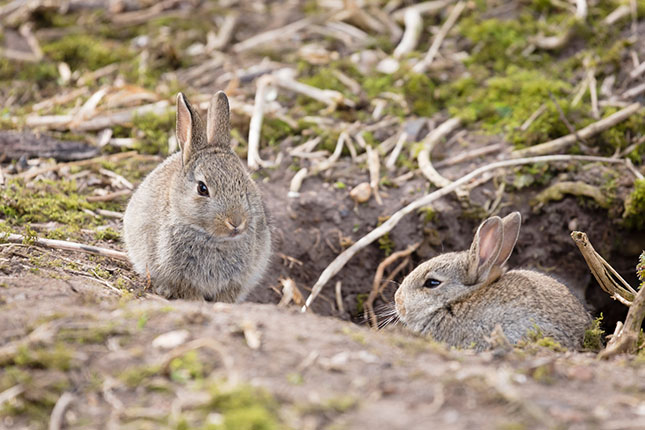Born To Be Wild

There is perhaps one moment in almost everyone’s life when they come across a baby raccoon, squirrel, or even deer fawn, which seems to be helpless and alone. We tend to think that the only way these cute little animals will survive is with our tender loving care. Other times, our culture considers it trendy to own a wild animal as a pet. What people often do not realize is that taking in wildlife animals as pets will actually hinder and hurt them more than it will help.
Dr. Alice Blue-McLendon, veterinary clinical associate professor at the Texas A&M University College of Veterinary Medicine & Biomedical Sciences, strongly discourages the practice of capturing wildlife as pets.
“Wildlife animals are defined as native, non-domestic animals, and they are protected by the state of Texas,” said Dr. Blue-McLendon . “Anyone wanting to capture one of these creatures must have a permit.”
Contrary to what may be believed, these permits are not easily obtained. In order to obtain a permit one must be an animal rehabilitator, or be using the animal for some sort of educational purpose. Even then, those who have permits do not usually intend to keep the animal for the rest of its life.
There are several major health concerns associated with having wildlife animals as pets. The biggest concern, according to Dr. Blue-McLendon, is rabies. Rabies is most prevalent in raccoons, skunks and foxes.
“The animals can harbor the disease for weeks without showing signs,” said Blue-McLendon, “yet they are can still spread the disease to the humans holding them captive. There is no vaccine against rabies that is approved for use in wildlife.”
Therefore, it is impossible to prevent a wildlife animal from either getting the disease or passing it on to humans. Another concern is improper food and housing provided to the animals while in human captivity. They may not be getting certain nutrients they need nor live in an environmental setting that is appropriate for healthy growth Even though baby wild animals may at first seem to be quite fine in a domestic environment, do not be fooled.
“When they are young, some seem to adapt, ” noted Blue-McLendon. “But as they get older and hit puberty they become aggressive and bite, inflicting serious wounds in humans. They do not make good pets.”
She also said that some wild animals can be tamed, or so it seems. In reality, some may be seemingly tame until some type of stress occurs, causing them to regress to their wild instincts.
“A wild baby animal found helpless in the woods by young children may be an intriguing and sometimes trendy option to have as a pet,” added Blue-McLendon, “but be advised that the best type of pet for a young child is a small pocket pet, such as a hamster, mouse, gerbil or anything that is adapted to a cage-type environment.”
Wild animals grow up and often become too great of a burden for any unskilled person to handle. The majority of animals who have been captured are handicapped by human care, and therefore unable to function in their natural habitat. Sadly, many people cannot control their once helpless little pet, and end up turning them loose only to die in a habitat they would have thrived in, if left alone.
Pet Talk is a service of the College of Veterinary Medicine & Biomedical Sciences, Texas A&M University. Stories can be viewed on the Web at vetmed.tamu.edu/news/pet-talk. Suggestions for future topics may be directed to editor@cvm.tamu.edu.
Angela G. Clendenin
Director, Communications & Public Relations
Ofc – (979) 862-2675
Cell – (979) 739-5718


